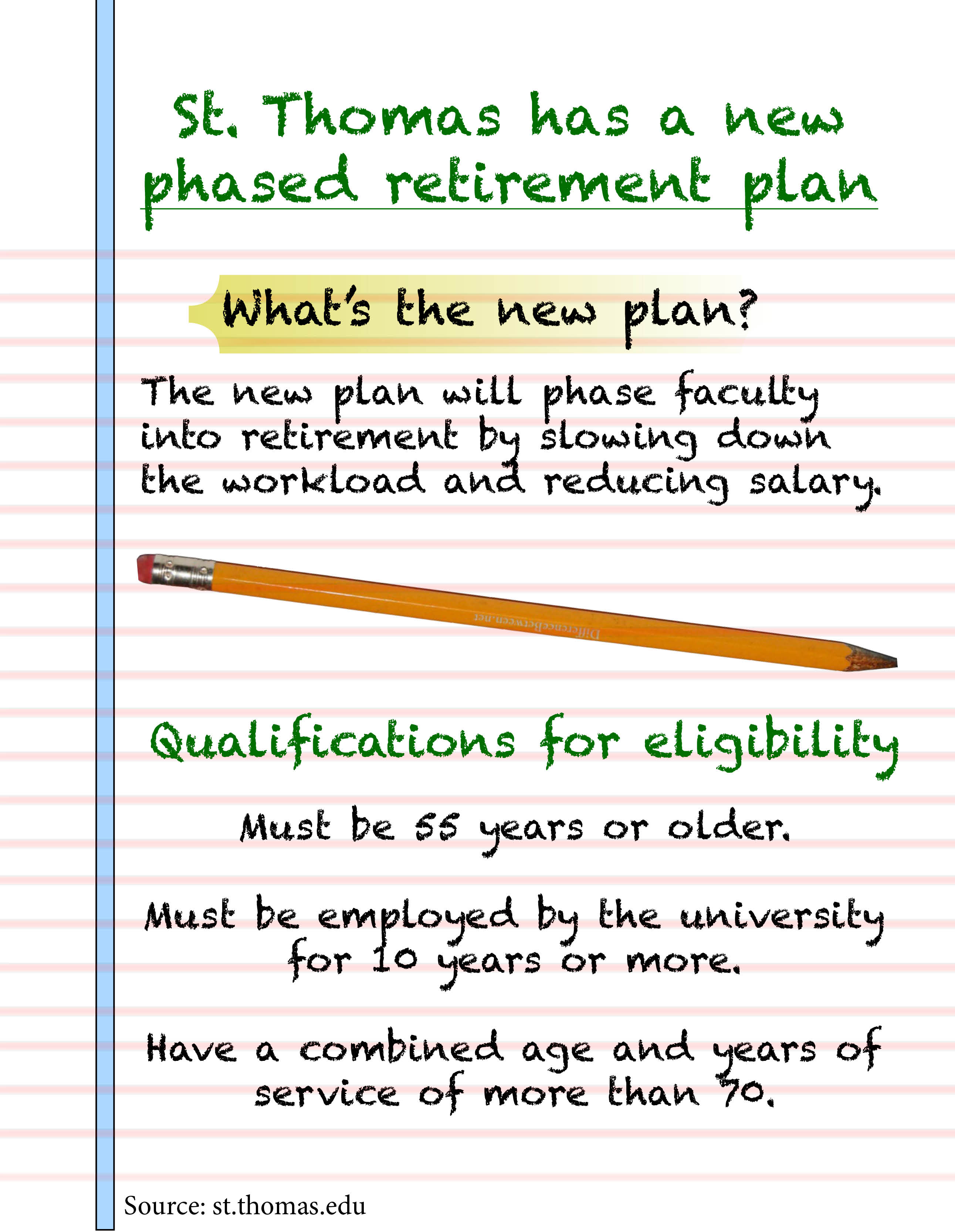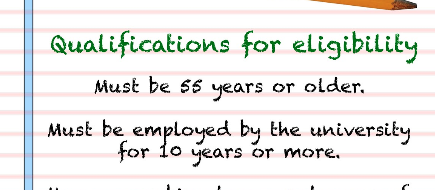
St. Thomas announced a new retirement program on Nov. 24 that will give faculty members the opportunity to transition into retirement over a period of three years with reduced workloads.
The phased retirement program, which will begin Aug. 1, 2015, will require faculty to work part time during the period, maintaining half of their teaching and student advisement time. The dean of the faculty’s college will lay out the rest of the responsibilities on an individual basis, according to Deb Sagstetter, rewards and recognition manager and Human Resources partner.
To be eligible for the program, faculty must be 55 years of age or older, have completed 10 years of continuous service with the university as tenured, tenure-track or clinical faculty and have a combined age and years of service of more than 70. Registration for the program begins in spring of 2015, but the opportunity will be available in years to come.
“They can choose to do it at another point in time, two years from now, three years from now,” Sagstetter said.
St. Thomas decided to implement the program, which is popular at many other universities, as a way to give both faculty members and the university time to transition. Sagstetter said faculty might choose this option because it gives them more time to phase into retirement.
“They might not be completely ready to retire, and this gives them an opportunity to still continue to teach and work with students while they’re exploring other things,” she said. “Rather than just having it end immediately, it gives them time to plan, think and transition.”
Though this retirement program follows last year’s retirement incentive closely, Sagstetter said the two are unrelated. Unlike the previous option, this new program is available only to faculty members, not staff. Sagstetter said staff are not eligible because it is more difficult and less common among other universities to arrange a phased retirement for their positions.
The retirement incentive from 2014 left the university with 92 positions to fill. Sagstetter said it Is too early to know how many faculty will take this new opportunity.
During the phased retirement of a faculty member, the dean of the faculty’s college and the provost will decide if a new member will be transitioned into the old position. Although it will vary on a case-to-case basis, Sagstetter said having a new hire present, even as a part-time member, would make the transition easier.
Sagstetter said the dean, the provost and the faculty member will work together to ensure there is no negative effect on the student body.
“Faculty work with their deans and work through what classes they’ll be teaching and what work they’ll be doing,” Sagstetter said. “There is always the right to say no to a faculty member if in fact it would be considered harmful. I don’t think we’ll ever get to that point.”
Rebecca Mariscal can be reached at mari2162@stthomas.edu.

